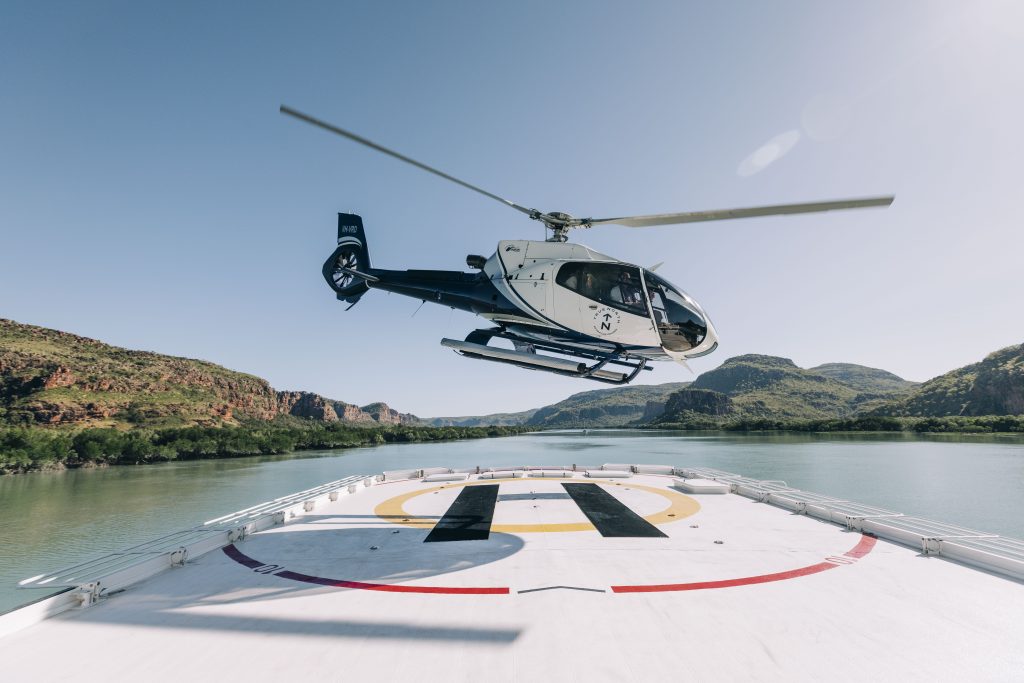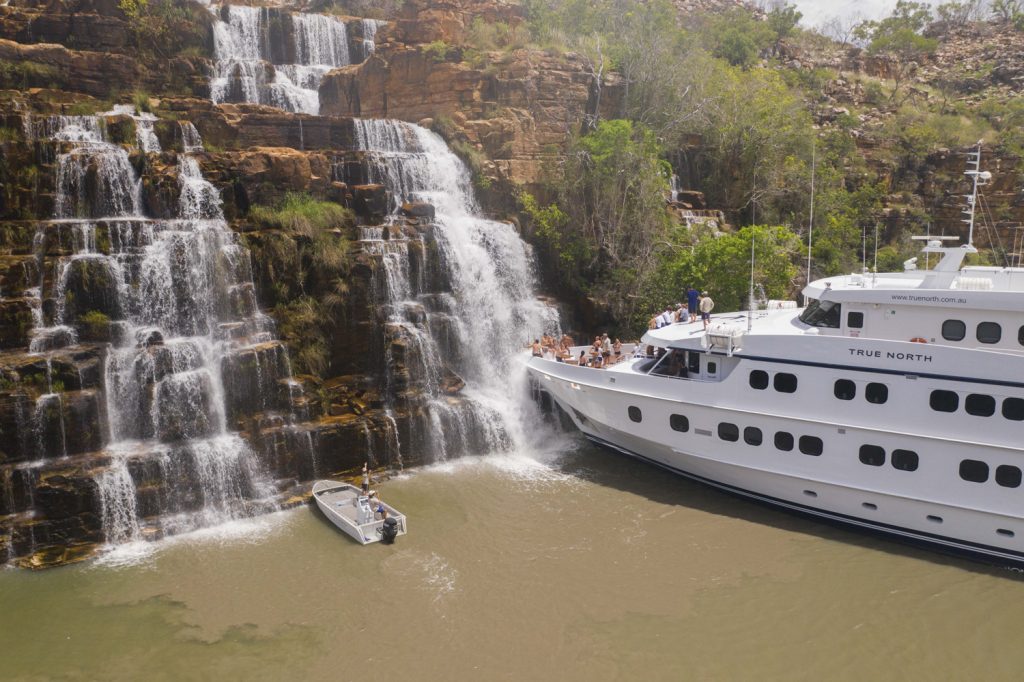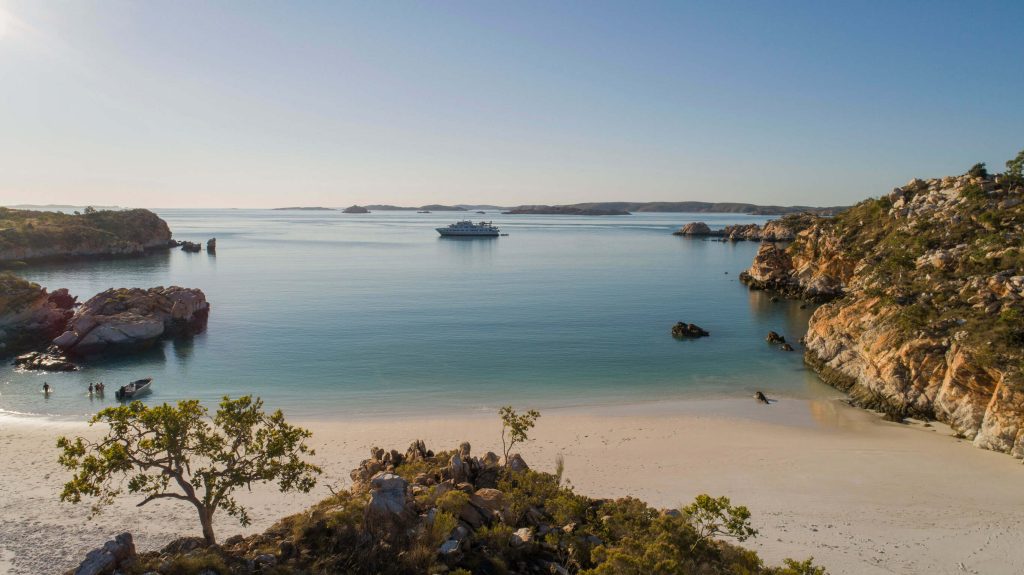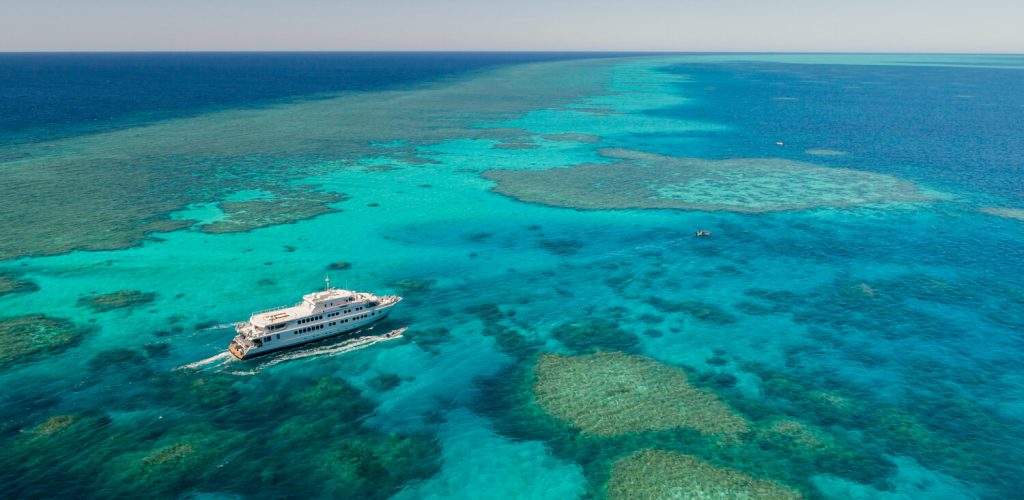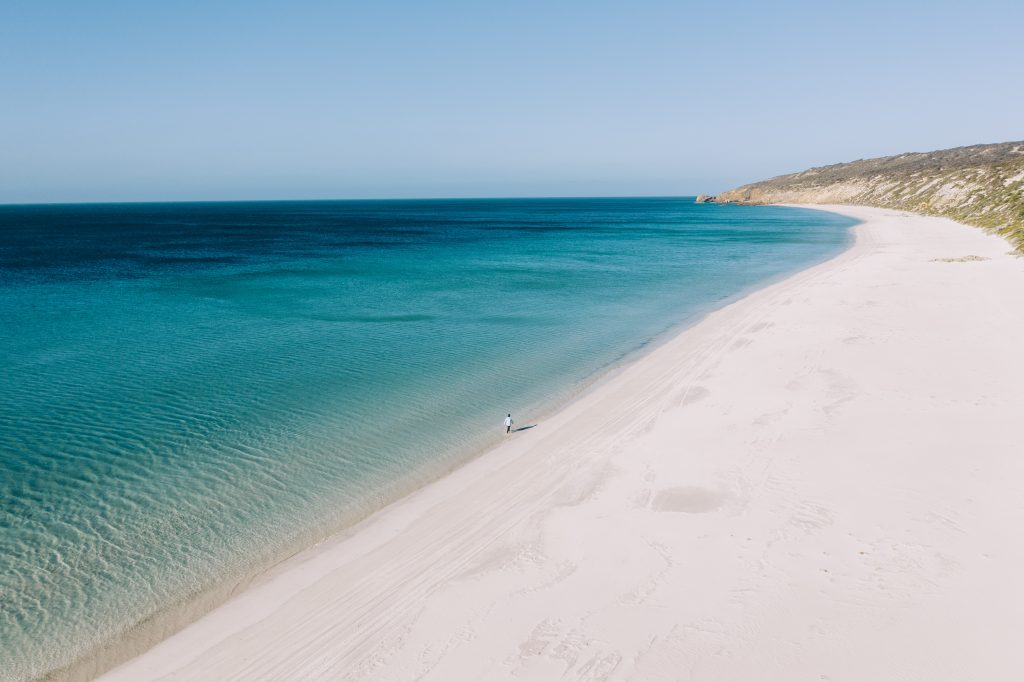The land of ahhhs: Exploring the Kimberley
By Tim Johnson, The Globe Mail 30th October 2015 (Canada)
Covering the northwest edge of the continent, this sawtooth stretch of sandstone is shot through with coves, rivers and waterfalls. Extremely hot in the dry season and prone to cyclones in the wet, it remains one of the least-settled parts of Australia.
To me, it felt like an epic hike, an excellent example – I told myself – of the age-old struggle of man versus nature, a combination climb and hike under the unrelenting sun in the farthest reaches of Australia. Mindful of the man-eating crocodiles, I forged ahead into a vast field of boulders. These were ancient rocks, some dating back 1.8-billion years, imprinted with some of the oldest fossils on Earth. I huffed and puffed, struggling to keep a towel in the crook of my arm, sweat dripping off my forehead as I scampered down one boulder, using my momentum to scale the next. At last, I reached my destination – a stunning, hidden lake fed by a waterfall. I felt like I should plant a flag, or at least raise my arms in victory. And then, just behind me, a woman at least 10 years older than me popped out of the bush. She’d just made the same journey holding a champagne glass. “That wasn’t so bad,” she said, beaming. “I didn’t even spill a drop!”
I was partway through a cruise exploring the coast of the Kimberley in Western Australia, one of the country’s most remote regions. Covering the northwest edge of the continent, this sawtooth stretch of sandstone is shot through with coves, rivers and waterfalls. Extremely hot in the dry season and prone to cyclones in the wet, the Kimberley remains one of the least-settled parts of Australia. A place of both natural and cultural beauty, the Kimberley has a long history, with an indigenous population that traces its lineage here back 30,000 years. The vast land is covered in indigenous rock art, but few roads or towns – a population of some 40,000 is spread over a land area roughly the size of California.
The Kimberley is so remote, I’d been exploring the coast for almost a week, and never once encountered any signs of modern civilization. I was sailing with a few dozen guests on board the True North, a compact ship with a shallow hull that allows it into small waterways. Outfitted with a helipad and a helicopter, cruisers can go even farther on shore excursions. This bucket-list voyage is known to many adventurous Aussies, but few North Americans – I considered myself lucky to be on board.
“This place is still a mystery to us,” explained the ship’s on-board naturalist, Cristiana Damiano. “It’s harsh, isolated, hard to access. This land is still being discovered. Here, you feel like an explorer.”
As we sailed from the sun-baked town of Broome, Damiano continued to explain the thrills, and the dangers. While Australia is well known as the home of some of the world’s deadliest creatures, the sheer number and pervasiveness of them here sets the Kimberley apart.
When a new species of death adder snake was discovered earlier this year – and identified as one of the most lethal on Earth – it was in the Kimberley.
“Here, never forget, you’re part of the food chain. That keeps you on your toes,” Damiano said, seriously. “In a blink of an eye, you’re gone. You develop a respect for nature.”
She added that, despite the area’s desolate nature, all sorts of creatures make their home here: water monitors, rock wallabies, sea snakes, northern long-necked turtles, bottlenose dolphins, manatees (or dugongs, as they’re known in Australia) and lots of sharks – bulls, tigers and hammerheads. And you’ll find the salt-water crocodile everywhere – a smart, cunning, prehistoric predator with almost supernatural powers to take down its prey.
But that doesn’t stop us from taking at least two daily excursions into the wild: There are no lazy days at sea on the True North.
At Horizontal Falls, just two days into the trip, I marvelled at this remarkable spot where the sea squeezes through two small fissures in long sandstone ridges. This creates “rapids” that reverse with the tide twice a day. I zoomed through the flow on a little boat outfitted with a high-powered motor, riding the rapids (seemingly) on a cushion of air.
A few days later, at Montgomery Reef, I saw those massive tides – rising in places to a height of 13 metres, just three metres lower than the Bay of Fundy – create a peculiar, rarely seen set of features: Twin reefs seemed to rise from beneath the sea to create a “river” bordered on both sides by coral, through which rushing, temporary waterfalls flowed.
One morning, I awoke to a truly remarkable sight.
Off the back of the ship, two giant saltwater crocs floated, perhaps hoping (in vain) for a bit of food from the kitchen. Off to the side, two small sharks swam toward them, their grey fins just visible above the murky water. It looked like a showdown between two of nature’s most deadly creatures, but at the last minute, the sharks veered away.
It was thrilling to watch and kept my adrenalin pumping all day, nor was the moment far from my mind when, about halfway through our weeklong trip, we dropped anchor in the broad Hunter River.
Here, the crew divided us into teams, and sent us off in fishing boats for a crabbing competition.
Sinking our first crab pot into a murky corner of the mangroves, our guide guffawed, “We’ll either catch a crab – or a croc!”
As we trolled slowly into the thick growth along the shore, I imagined seeing a killer reptile around every turn. The first step was baiting the pots, dropping them down to the base of the mangroves, where, Simon told us, crabs hang out, digging tunnels in the mud and eating small fish. After dropping about a dozen pots on either side of a broad channel, we returned about an hour later to discover we’d caught enough for a picnic lunch, which the True North crew served with champagne by a bonfire on an empty beach. When I remarked that only a bunch of Aussies would be crazy enough to brave croc-infested waters for a few crustaceans, the boat erupted in laughter.
But the most astounding adventures on the voyage were definitely in the air. Being on board a helicopter as it lifts off and lands on a ship was a thrill. Pilot Will Stinson would fly us to breathtaking headlands, gently placing the chopper near a cliff face so we could climb out and amble to the edge for grand views, sans the sweaty hike.
On one flight, we curled through canyons in search of wildlife and hovered over aquamarine coves dotted with the dark forms of dugongs. Stinson narrated the trip through our headsets, pointing out areas of aboriginal rock art, and often regaling us with stories of the escapades of Phillip Parker King, a legendary explorer who mapped much of this desolate land on four separate voyages in the early 19th century.
The True North crew have put a waterfall on the map, too: Eagle Falls was named by company scouts out looking for a good picnic spot. And now Stinson was attempting what seemed like an aeronautical stunt at that same location.
Descending, he placed the chopper on a ledge just wide enough to support the skids, right beside Eagle’s cascade.
Disembarking, I was handed a full bottle of champagne, the cork already popped. I walked over and joined a group of my fellow cruisers in a pool of cold, clear water, midway down the falls – at one point taking a long swig of the bubbly while I stood beneath the soaking veil of water.
My “epic” hike still lay ahead, and a picnic of barramundi steaks awaited. But for now, I was content to soak up the sun, enjoy the champagne, and – hopefully – steer clear of any crocs.
Special to The Globe and Mail
The writer was a guest of North Star Cruises and Swissotel Sydney. Neither reviewed, nor approved the article. Source article please click The Globe And Mail.
